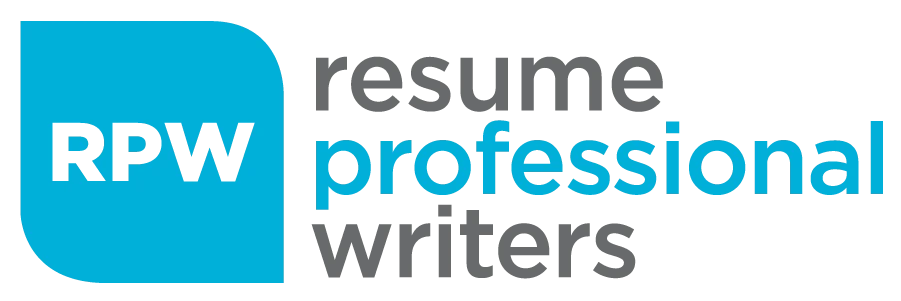This year appears to be a promising year for job hunters. With the labor market recovering from the pandemic, there is significant projected job growth from 2020 to 2030. However, this does not mean that landing their preferred jobs is simple for everyone. Even in current market, prospects differ greatly based on the industry, skill level, and competencies.
If you’re looking for a new job, knowing the trends and what is a resume for job seekers and employers means you’ll have a better chance of landing one. Are you struggling with writing the perfect resume? If the answer is yes, you’re not alone. Let’s take a closer look on what a resume is before you take the leap on your next career.
What is a Resume?
While people may have different notions on what a resume is, others think that its sole function is to help them land a job. This isn’t completely the case. A resume summarizes an applicant’s work experience, competencies, skills, and accomplishments. This job search tool, whether it’s on paper or in electronic form, is a vehicle for you to market yourself to potential employers. If you are running a business or applying for college admission, you will also need a resume.
Moreover, your resume contains information about your professional experience. This comprises a list of all of the jobs you’ve held as well as a list of skills you’ve acquired during the course of your career and schooling. As a result, you must be succinct and precise, highlighting all of your academic and career experiences that convince the company that you are suited for the position.

What is a Resume’s Purpose?
Your resume is a means for you to communicate to a potential employer your desire to apply for a job. Keep in mind, though, that your resume is different from a biography. On average, an employer spends no more than 20 seconds screening and selecting all incoming resumes. Your prospective employers may simply glance at your resume for a few seconds before deciding whether or not to give you an interview.
Make sure your resume is tailored to particular employers by stressing your relevant talents for that position and highlighting any past experience that might be beneficial to them. Regardless of how many hours you spent preparing it, if your resume is written well and equipped with powerful resume keywords, you will be invited to an interview.
Why is Resume Important?
Now that you have an idea what is a resume, you must also understand its importance in today’s ever-changing job market.
You are a regular person to your potential employers. They can tell how well you communicate by glancing at your resume. It also shows your ability to arrange data and write clearly, as well as your attention to detail. Rather than utilizing the same resume for all job applications, you should personalize your resume and cover letter to the specific demands of the business.
Make sure your resume is chock-full of employer benefits, not simply listing the skills that you have. This way, it will help you stand out from the crowd. Today’s resumes, rather than the skills-based resumes of the past, must be results driven, according to resume experts. The employer must instantly realize what benefits you provide to his organization by reading your resume.
What to Include on a Resume
Choosing what to put on a resume can be a real struggle even if it’s not your first time writing a resume. After all, not every resume has the same sections. Depending on your experience level and where you’re applying, your resume might look completely different.
- Previous work accomplishments
- Soft, hard, and technical skills are all part of your career history
- Information about your past positions
- Information on your education
- Certifications, accolades, and awards
- Anything else you might want to add on your resume at some point in the future

1. Contact Details
Your first and last names, phone number, and email address should all be included. Make sure to add your complete address. You may also include your LinkedIn profile if it’s up to date, as well as your postal address if you want to convey that you reside in the area where you’re applying.
2. Goal or Resume Summary
A resume summary (also known as a career headline, credentials profile, or summary profile) is a short statement that emphasizes your essential talents and expertise in order to catch the attention of the hiring manager. The part, as the name implies, is a summary of your qualifications, the contents of which are drawn from other sections of your resume. Your major career highlights, areas of specialization, licenses and certificates, technical aptitude, and language competence are all included in this section.
3. Skills or Areas of Expertise
The skills part of your resume demonstrates to employers that you have the talents needed to succeed in the position. Employers frequently pay close attention to the skills part of your resume when deciding whether or not you should advance to the next stage of the recruiting process. Include any resume abilities that are relevant to the post in this section. To show that you’re a well-rounded applicant, include a good balance of hard and soft abilities on your resume.
Soft Skills Include:
- Active Listening
- Communication
- Customer Service
- Interpersonal Skills
- Leadership
- Management Skills
- Problem-Solving
- Time Management
Hard Skills Include:
- Copywriting
- Statistical Analysis and Data Mining
- Cashier Skills
- Video Editing
- Social Media
- Graphic Design
- Project Management
- Accounting and Finance
- Business and Data Analysis
- Patient Care
- Server Maintenance
- Database Management
- Engineering
4. Work History
List every previous job you’ve held and put them in chronological order, starting with the most recent experience and working backwards. Put the names of the companies, the dates of employment, and locations of assignment. List each of your responsibilities and major accomplishments for each job you’ve held.
5. Education
Include the names of your schools, your highest degree, and your majors and minors. If you don’t have any experience or it’s relevant to the position, you may also provide your GPA. Take not to include numbers when it’s higher than 3.5. Plus, relevant courses taken while completing your undergraduate or graduate education. Aside from education, you may list your certifications or training.

Types of Resume Formats
You may use various resumes to apply for job vacancies. A chronological, functional, hybrid, or targeted resume are all options. Each resume kind serves a distinct function. As a result, you must consider your present job situation while determining the best format to write. Read on to find out which resume format is right for you.
1. Chronological Resume
For years, people have thought of the chronological resume as the standard of what is a resume. A chronological resume is a resume format that lists your work history in order in terms of dates of each position. It starts with your most recent job listed at the top of the section. This type of format is particularly advisable for those with rich work history, the chronological resume prioritizes and lists your work experience and achievements from most to least recent.
2. Functional Resume
What is a resume format with skills as the highlight instead of work experience? It’s the functional resume structure. If you’re a new graduate with limited job experience or switching fields, you can utilize a functional resume. You’ll want to get your skill summary section just right if you want to create a compelling functional resume.
3. Combination Resume
A combination resume, often known as a hybrid resume, combines the approach of a chronological and functional format. In other words, it gives equal weight to your talents and job experience. This format enables you to give a fast overview of your actual work experience as well as transferable skills.
Note: The combination format shouldn’t be selected in writing a resume unless you:
- Are in the process of changing careers.
- Have some gaps in your employment history.
- Are a senior-level applicant with a broad variety of abilities and experience.
4. Targeted Resume
The core of creating a targeted resume is about scrutinizing the job posting you wish to fill in. In most cases, recruiting managers include the abilities, responsibilities, and characteristics that they are looking for in the job post. Then, on your resume, emphasize these skills to show that you’re a good fit for the job.
5. Infographic Resume
In today’s competitive job market, some job seekers are resorting to online tools like online resume builders to create visual resumes that help them stand out. In comparison to standard resume layouts, an infographic resume incorporates visual design components. An infographic resume combines style, color, and font styling to present work history. On the other hand, a typical resume merely uses plain text to list information from top to bottom.
Related Article: Resume Trends for 2023 to Kick-Start Your New Career
Resume Writing for Every Job Seeker
List prior successes and important contributions to show the company or hiring manager what you can bring to the table, and you’ll enhance your chances of landing an interview. Are you not putting your best foot forward on your resume? Do you require any further assistance? Our expert writers can review your resume for free or craft a compelling resume to get you noticed!







